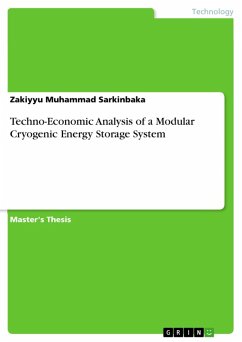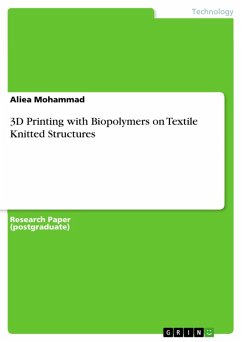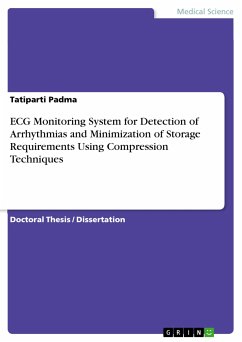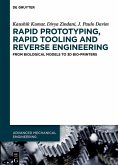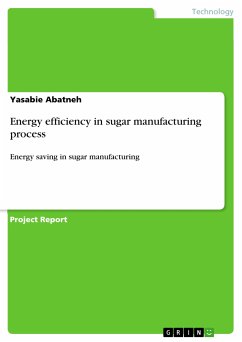Master's Thesis from the year 2024 in the subject Engineering - Chemical Engineering, grade: 10.0, , course: Chemical Engineering, language: English, abstract: Sustaining economic growth while reducing reliance on fossil fuels for environmental protection is a global challenge. Efforts are made to decrease energy utilization by enhancing energy efficiency and discovering clean, renewable energy sources. Cryogenic energy storage (CES) is a grid-scale energy system where electricity is stored in the form of liquefied air. It is regarded as a solution because it allows for increased electricity generation while also providing economic benefits by avoiding costly operational consequences. The three CES system configurations: standalone adiabatic, waste heat integration, and combustion integration were modelled and simulated in Aspen HYSY V8.8. Unlike in the conventional CES, Dowtherm-Q was used as the thermal fluid due to its thermal stability, non-corrosiveness, and high temperature resistance. The results indicated that the higher the adiabatic efficiency of the turbine, the greater the power generated; also, increasing the turbine inlet temperature enhanced the performance of the system configuration by lowering the pressure and increasing the power of the turbine. The economic analysis revealed that the waste heat-based system has both the lowest operating cost, capital cost, utility cost, and higher energy savings. Waste heat integration produces the most power (653.70 KW) and saves the most energy (69.58%), with lower capital costs, operating costs, and utility costs due to the increased adiabatic efficiency of the turbine. It implies that CES with waste heat integration is economically more promising compared to adiabatic standalone and the integration of combustion.
Dieser Download kann aus rechtlichen Gründen nur mit Rechnungsadresse in A, B, BG, CY, CZ, D, DK, EW, E, FIN, F, GR, HR, H, IRL, I, LT, L, LR, M, NL, PL, P, R, S, SLO, SK ausgeliefert werden.

